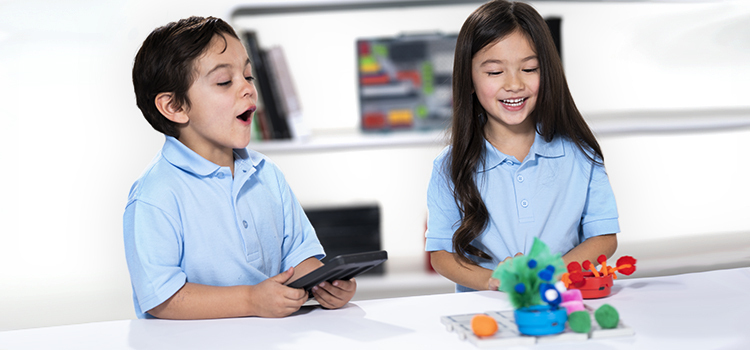This post is sponsored by Vex Robotics
Social emotional learning, or SEL, is a vital component of teaching holistically. For students to be successful in school and their careers, they must be socially and emotionally competent. That is where SEL, a process of developing self-awareness, self-control, and interpersonal skills, helps. According to Pennsylvania State University research, SEL reduces conduct problems, substance abuse, and emotional distress.
At the onset of the COVID-19 pandemic, learning was disrupted for an estimated 55 million students, according to Rutgers Center for Effective School Practices.
As districts continue to look for ways to make up for lost academic and SEL time, new ways of looking at engaging students are emerging. Computer science, and robotics – long considered smart ways to teach students about STEM topics – are increasingly being viewed as SEL skill development tools, too.
It is a natural connection. According to the Cultural Studies of Science Education, STEM education is well-suited for teaching empathy and other emotion-related skills. The National Science Teaching Association (NSTA) reports that STEM education promotes critical thinking, problem-solving, higher-order thinking, design, perseverance, adaptability, cooperation, organization, and responsibility.
An edtech solution such as VEX 123 -– an interactive, programmable robot that takes computer science and computational thinking off the screen and brings it to life — can engage students in learning, as well as hone their SEL skills.
Building robotics builds SEL skills
VEX 123 and its associated curriculum feature an experiential learning pedagogy where students can see the content they have been presented and how that works in an exciting and relevant way. In addition, working with a robot such as VEX 123 encourages students to communicate with each other, work collaboratively and creatively, as well as employ critical thinking skills.
One of the many benefits of VEX 123 is it takes computer science off the screen and promotes active learning. Students work together sequencing button presses to allow a robot to travel a path they have drawn. They will experience both positive and negative emotions as they achieve both failure and success using VEX 123. Then, through trial and error, students will finally achieve their goal and experience the pride that comes with such an accomplishment.
SEL is not only part of the curriculum but is incorporated in overt ways. Take the “Act” commands. They are precoded complex behaviors that are part of coding that have the 123 robots act out particular emotions. This is the opportune time for teachers and students to discuss emotional expressions and the behaviors that correspond with these feelings. They then create their own “emotion codes” for their robot. Talking about feelings and emotional expression can be difficult, but by applying it to an action like coding a robot makes it easier to open up. It offers space between themselves and this conversation. In the process, they engage in social-emotional learning while having fun.
Fortunately for learners, these efforts to be creative in making up for lost academic and SEL time have resulted in exciting ways of engaging students. Computer science and robotics as the new face of SEL skill development tools can celebrated as a true win, both in the classroom and beyond.
VEX Robotics is the global leader in STEM education, offering the VEX continuum to help students of all abilities find success quickly and also grow their STEM knowledge and competencies. Learn more about how we empower educators to engage and inspire the STEM innovators and problem-solvers of today and tomorrow.
